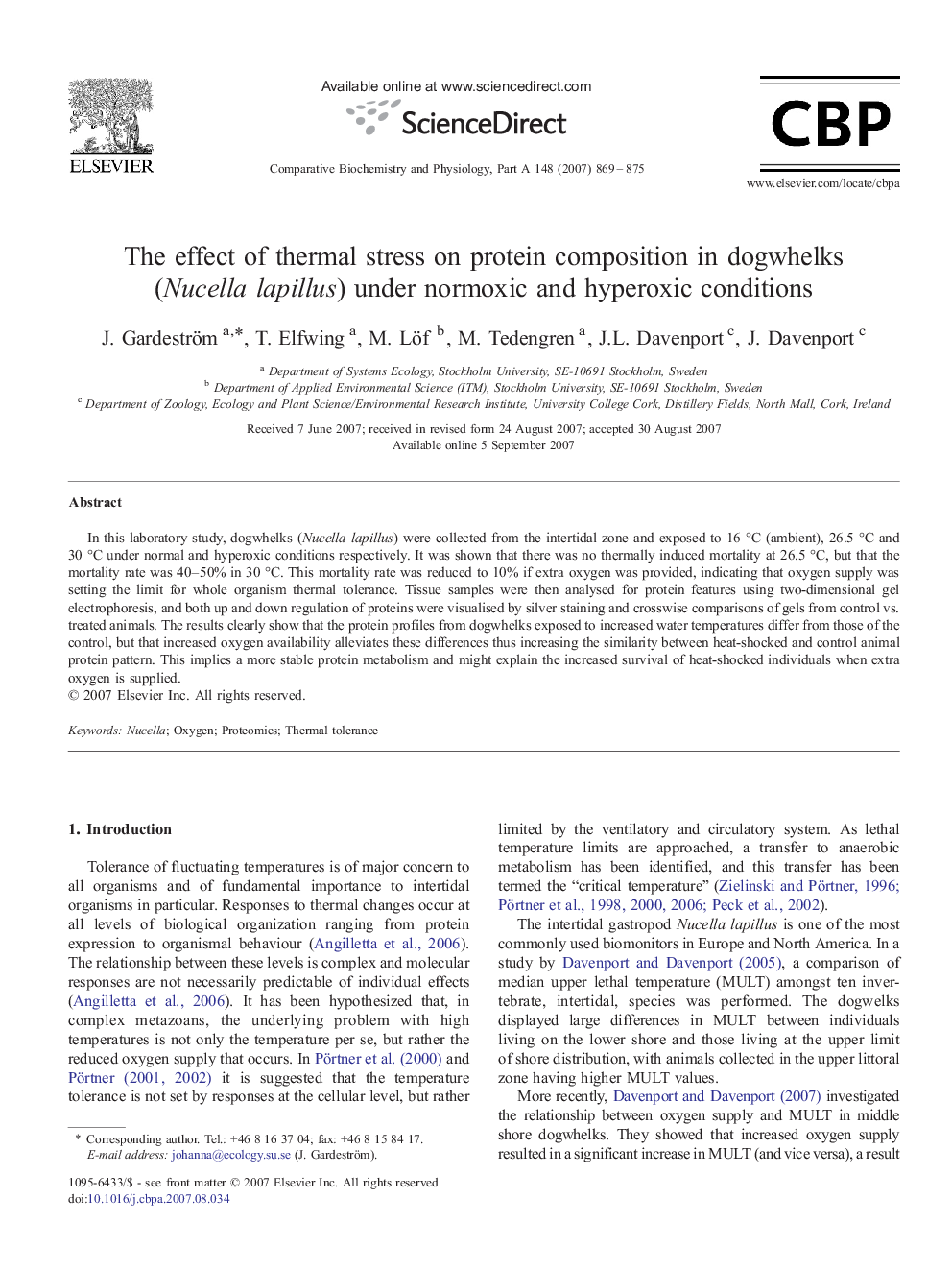| Article ID | Journal | Published Year | Pages | File Type |
|---|---|---|---|---|
| 1974080 | Comparative Biochemistry and Physiology Part A: Molecular & Integrative Physiology | 2007 | 7 Pages |
In this laboratory study, dogwhelks (Nucella lapillus) were collected from the intertidal zone and exposed to 16 °C (ambient), 26.5 °C and 30 °C under normal and hyperoxic conditions respectively. It was shown that there was no thermally induced mortality at 26.5 °C, but that the mortality rate was 40–50% in 30 °C. This mortality rate was reduced to 10% if extra oxygen was provided, indicating that oxygen supply was setting the limit for whole organism thermal tolerance. Tissue samples were then analysed for protein features using two-dimensional gel electrophoresis, and both up and down regulation of proteins were visualised by silver staining and crosswise comparisons of gels from control vs. treated animals. The results clearly show that the protein profiles from dogwhelks exposed to increased water temperatures differ from those of the control, but that increased oxygen availability alleviates these differences thus increasing the similarity between heat-shocked and control animal protein pattern. This implies a more stable protein metabolism and might explain the increased survival of heat-shocked individuals when extra oxygen is supplied.
